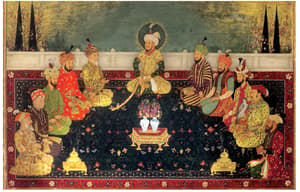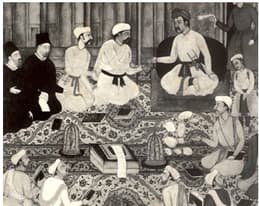Exercise 1
Embibe Experts Social Science Solutions for Exercise 1
Simple step-by-step solutions to Exercise 1 questions of The Mughals (16th to 17th Century) from Social Science Textbook of Competency Based Questions for Class VII. Also get 3D topic explainers, cheat sheets, and unlimited doubts solving on EMBIBE.
Questions from Exercise 1 with Hints & Solutions
Do you think this painting suggests that the Mughals claimed kingship as a birthright?

Peasants were vital for the economy of the Mughal Empire. Do you think that they are as important today? Has the gap in the income between the rich and the poor in India changed a great deal from the period of the Mughals?
Nobles with a zat of were ranked higher than those of . In Akbar’s reign there were mansabdars with a rank of zat; by Aurangzeb’s reign the number of mansabdars had increased to . Would this have meant more expenditure for the state?
Read the clues carefully. Mark and label the answers on the outline map of India : Three historic battles were fought at this place in 1526, 1556 and 1761 respectively.
On an outline map of India, mark and colour the territories of the Mughal empire under Akbar.
How important was the income from land revenue to the stability of the Mughal Empire?
Can you identify the Jesuit priests in this picture?

Like the Mughal Empire, India today also comprises many social and cultural units. Does this pose a challenge to national integration?
